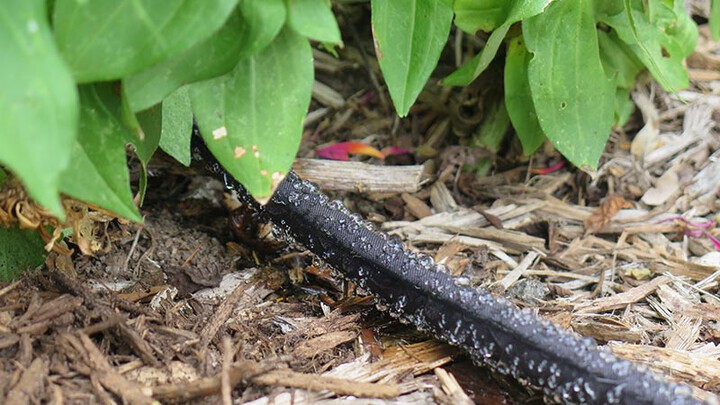If you’re lucky enough to live in a mild climate, there’s no need to hibernate through the winter. In areas on the northern fringes of warm regions, the gardening season doesn’t stop just because the calendar claims it’s winter. Here are a few tips and techniques that will extend your gardening season no matter where you live.

·Cover It Up
Many shoulder-season crops—planted either very early in spring or quite late in the summer—can tolerate frost, particularly if you take advantage of row covers. Lightweight spun fabric row covers (available at garden shops and from mail-order gardening specialty companies) can be laid directly on top of vegetable crops to protect them from frost. A double layer of row cover will protect crops from frost even if the air temperature drops into the 20s. You can’t expect to grow tomatoes under row covers, but kale, cabbage, Swiss chard and other hardy greens are surprisingly frost tolerant.
Row covers are also handy for flower gardeners. Use them in early fall when a quick, light frost is in the forecast. If you’re alert, an early cold snap doesn’t have to bring the gardening season to an abrupt end.
Burlap, bedsheets and bath towels will serve if you don’t have row covers, but you’ll have to be careful or they might crush your plants. You can leave your row cover, which is very lightweight, in place for several days if necessary. If you use other household textiles, check your plants every day and remove the covers during the day if possible.
·Choose Wisely
Cool-season flowers bloom even after the weather turns chilly, and they often come back into bloom in the spring. Pansies and violas are among the best fall and early spring flowers for gardeners in frost-prone areas. In mild climates, they’ll bloom all winter.
In addition to pansies, look for dianthus, snapdragons and calendulas (sometimes called pot marigolds) at garden shops. They’re great in flowerpots, and they brighten up the garden in very early spring.
These flowers may need to be watered in winter if there is not enough rain to keep them moist. Shower them with Gilmour’s Front Control Watering Nozzle on the Mist or Garden setting. The nozzle’s handle is comfortable even if you’re watering with gloves on, and the settings are easy to change by turning the dial.
·Winter Watering
In mild climates or in climates where freezes alternate with thaws, you may need to water the garden from time to time in the winter. A good hose will make winter watering easy. Keep the hose in a frost-free place, such as your garage. When you need to water, hook it up and water evergreens like boxwood and yews gently but thoroughly, keeping the hose right down at soil level. You may want to add a nozzle on the Shrub setting to disperse the spray. Drain the hose and the nozzle before storing them away again out of the weather. Where frosts are rare, your hose and nozzles can stay outside year round.

·Soak It Up
Try using a soaker hose to help take care of plants that need a little extra moisture through the winter. These hoses usually sit on top of the soil. Water leaks slowly out of the hose, delivering moisture directly to the plants’ roots.
To protect soaker hoses from frost in the winter, cover them with a two-inch layer of mulch from a garden shop, or with crushed autumn leaves. The mulch will help prevent water from freezing in the soaker hose, and it will also help maintain an even soil temperature, protecting your plants during freezing and thawing weather. Before you water, check to make sure your soaker hose is not frozen.

·Inside job
Even in cold climates, you can keep your fingers in the soil—indoors—while you wait for spring. Don’t forget about windowsill gardening. Big, bold Amaryllis flowers (also known as Hippeastrum) bloom spectacularly for weeks indoors in winter. These large bulbs grow best in small pots. In summer, put them out in the garden (in their pots). Water from time to time—but be sure to let the soil dry out well between waterings—and then bring them indoors again in the fall for a repeat performance.
A pot of rosemary, basil or parsley on a windowsill will also keep the gardening spirit alive through the winter no matter where you live. You can’t expect herbs to grow as vigorously in winter light indoors as they would outdoors in the summer, but you’ll easily harvest enough for soups and salads. Windowsill herbs are worth growing for their fragrance alone.
There’s no reason not to keep growing during the winter. Doing a few gardening chores on nice winter days will not only feel great but will help ensure that in the coming year, your garden will be even prettier and more fruitful than last year.